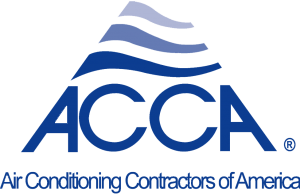As spring approaches, commercial facility managers must prepare their HVACR systems to handle warmer temperatures. Properly transitioning from heating to cooling is critical for maintaining indoor comfort, protecting equipment, and managing energy costs. Here’s how to effectively shift your HVACR system to cooling mode while ensuring peak performance throughout the season.
Why Seasonal Transition Matters
Switching from heating to cooling isn’t as simple as flipping a switch. Without proper preparation, you risk unexpected equipment failure, poor indoor air quality, and higher energy costs. A proactive approach can prevent costly breakdowns and ensure efficient operation.
Step 1: Schedule a Professional System Inspection
A comprehensive HVACR inspection by a qualified technician is the best starting point. Key tasks include:
- Check Refrigerant Levels: Low refrigerant can reduce cooling efficiency and damage the compressor. According to the U.S. Department of Energy, proper refrigerant levels can improve efficiency by 5-10%.
- Inspect Electrical Connections: Loose or corroded wires can create safety hazards and cause system malfunctions.
- Test System Controls: Verifying that thermostats and control systems respond correctly ensures precise temperature management.
- Check key components: Check and replace belts. Check all fan motors for proper operation
Step 2: Clean Coils and Condensers
Dirty coils force your HVACR system to work harder, driving up energy costs. The U.S. Department of Energy states that cleaning coils annually can improve system efficiency by up to 30%.
Pro Tip: In locations like restaurants where grease buildup is common, coils may need more frequent cleaning to maintain optimal performance.
Step 3: Change or Clean Air Filters
Clogged filters restrict airflow, reducing efficiency and increasing wear on system components. The Environmental Protection Agency (EPA) recommends changing filters every 1-3 months, depending on usage and environmental factors.
Step 4: Inspect and Clear Drain Lines
Drain lines can become clogged with algae, dirt, or debris during heating season. Blocked lines can lead to water damage and system shutdowns. Clearing them ensures proper drainage during cooling season.
Step 5: Program Thermostats and Controls
Spring temperatures can fluctuate dramatically. Programming thermostats for optimal cooling cycles during peak business hours can prevent energy waste and improve comfort. Consider implementing setback temperatures during off-hours to further reduce costs.
Step 6: Evaluate Building Envelope and Ventilation
Spring is an ideal time to assess windows, doors, and ventilation systems. Ensuring proper sealing and airflow reduces strain on HVACR equipment and improves energy efficiency.
Pros and Cons of Seasonal HVACR Transition
Pros:
- Improved Efficiency: Proper preparation ensures your system runs at peak efficiency, lowering energy costs.
- Reduced Downtime: Preventative maintenance minimizes unexpected breakdowns during busy cooling months.
- Extended Equipment Lifespan: Regular maintenance reduces strain on key components, helping units last longer.
Cons:
- Initial Investment: Professional inspections and maintenance can incur costs, but these are typically outweighed by energy savings and reduced repair bills.
- Time Commitment: Proper preparation requires scheduling downtime for servicing, which may temporarily impact comfort levels. Technicians should service the units before the store opens or after hours during unoccupied times.
Final Thoughts
By taking a proactive approach to transitioning your HVACR system from heating to cooling, you can ensure your facilities are comfortable, efficient, and prepared for seasonal temperature changes. Investing in preventative maintenance reduces costly surprises and keeps your equipment operating reliably throughout the year. If you’re unsure where to start, partnering with a trusted HVACR service provider can simplify the process and ensure your system is properly prepared for the season ahead.
To read another concise guide on preparing facilities for spring, highlighting tasks like removing accumulated debris, ensuring proper storage of chemicals, cleaning gutters and drains, and inspecting HVAC condensate lines, check out “Four Steps To Prepare Your Facility For Spring” as published in FacilityExecutive at https://facilityexecutive.com/four-steps-to-prepare-your-facility-for-spring/




